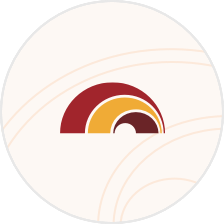Best Path to Restoring Your Financial Health
Posted on Jun 21, 2023

As the U.S. and global economies work to manage rising inflation and a challenging labor market, most of the impacts on our local communities are beyond our control. However, with First Hawaiian Bank at your side, you can still take steps to rechart a more sustainable course for your personal finances.
Get serious about setting a budget
A budget helps you plot the best, fastest route back to financial health. With one, you can track precisely how much total monthly income you have against fixed expenses, like rent or your mortgage and auto or personal loans, variable expenses, like groceries, utilities, or credit card payments, and discretionary expenses, such as saving for college, a vacation, or opening a business.
One of the best ways to manage and keep track of your budget is through a financial management tool. MoneyMap is a tool that helps you monitor your First Hawaiian Bank account and almost any other financial institution you may have. With insights, goals, predictive spending, and trends, MoneyMap equips you with a variety of features to manage and optimize your budget all for free when you sign up for Online Banking! Learn more on how MoneyMap can help you build a comfortable and secure financial future.
Tally up all your sources of income
Like most, you have a set amount of income flowing to you monthly, either as salary, pension or other annuity payments, or Social Security, disability, or retirement income.
And that’s on top of whatever else you draw from your personal portfolio of investments such as 401(K) or Roth IRAs, and dividends from mutual funds, stocks, or bonds.
This would also be a good time to think about giving yourself a raise, by steering a bigger portion of your income to savings, especially if you’re considering retirement.
Calculate precisely how much you owe
You should have a rough idea of how much in total you owe – your home, your vehicle(s), your credit-card(s) and your student-loan payments, outstanding local, state, and federal taxes included. Take time to add up ALL of your debts to arrive at a precise total.
Create a plan to retire your debt
With that sum in hand, now it’s time to devise a repayment plan that will drastically reduce, if not eliminate, your debt.
This would be an ideal time to obtain the latest copy of your credit report, to verify to whom you owe and how much. You may find listed old, settled debts along with active but long-forgotten credit accounts you should consider closing right away.
The report also serves as a baseline for tracking your progress in cutting your debt.
Ask your individual creditors for help
Creditors understand bad things happen to good borrowers, so that’s why many have financial-assistance or counseling programs available for debtors who are experiencing financial hardship.
Some creditors, such as student-loan servicers, can temporarily suspend debt payments – known as forbearance -- to eligible borrowers, for financial-assistance or counseling programs that can give you time to financially regroup.
Other options include renegotiating your debt with credit-card issuers, other creditors, or setting up workout agreements that may waive or lower minimum payments and interest rates or erase late fees.
Know, however, interest on any unpaid loan balance continues to accumulate during forbearance, which could make your debt pile even bigger. Beware, too, that debt workouts and renegotiations may trigger tax consequences.
Set realistic repayment deadlines
As a rule, 36 months is considered reasonable for paying off debts like credit cards. Larger debts, like auto or personal loans, mortgages and home-equity loans, may take longer.
Start off slow. Take your smallest debt, divide the amount owed by 12, to figure out how much you’d have to pay monthly to retire the entire debt in one year.
While most banks, credit unions, and other creditors require minimum monthly payments, many allow debtors to pay some or all of their borrowings early, penalty free. Take a fresh look at your credit contract, or contact your creditors, to determine which ones allow early repayment.
The good news is, the faster you pay down your debt, the more you’ll save in interest.
Find creative ways to trim expenses
Consider other money sources you can earmark to pay down debt, such as cash gifts you receive for birthdays and holidays. You could also consider taking on a part-time job or start a side hustle around a passion or hobby, earnings from which you could devote to retiring debt or boost savings.
Strive for a debt-free lifestyle
Taking on debt usually begins as a lifestyle choice. So, too, you can choose to avoid it. Do I really need that new dress, business suit or a luxury vacation?
Instead of buying instantly on a credit card and paying back in installments over time, why not take time on the front end, to salt away a few dollars weekly until you have all the cash you need, then pay all at once?
The best news here is you may wind up with no accumulating interest and no monthly payments.
Ready to get started? Let First Hawaiian Bank help put you on the path toward a lifestyle free of debt.
Was this helpful?
Thank you for the feedback








